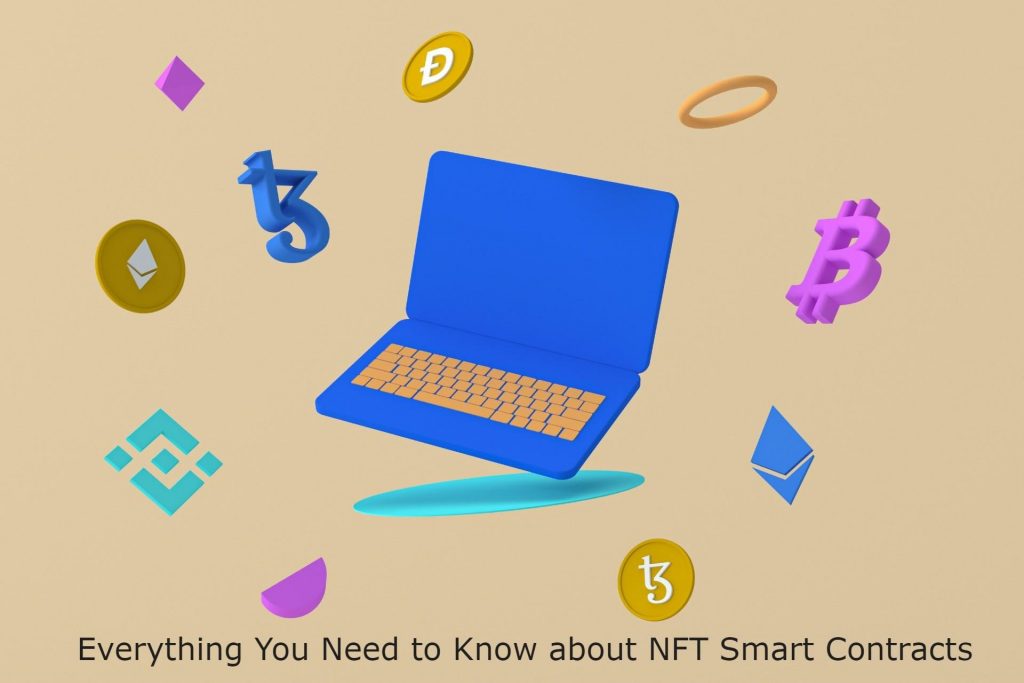The use of blockchain technology to create and manage digital intellectual properties known as NFTs is presently extremely popular. NFTs are essentially cryptocurrencies that run on blockchains. The role of an NFT is determined by smart contracts beneath the surface.
The assignment of an NFT must be managed by a program that creates – or “mints” – the token for it to be transferable and to provide information on the current owner of the NFT. We need a “smart contract” for this.
What is a smart contract?
A smart contract is not a legal agreement in the conventional sense, but it’s a program that runs on the blockchain. Smart contracts have two main features: they can receive and transmit transactions, and they are unchangeable.
A smart contract is a type of software that runs on the blockchain and operates independently. It contains its own private/public key pair, as well as the ability to give, read, and store data. Smart contracts are engaged via wallet transactions with the smart contract’s wallet.

Each transaction has a set of commands that the smart contract “understands.” The storage space of the smart contract holds data such as the precise number of a token, the address of its assigned owner, and other information about the token or smart contract.
The smart contract’s code must support certain operations in order for it to be “fit” to generate an NFT on a specific blockchain (and “fit” in the applicable blockchain). Under ERC-721.6, a common definition of NFTs is established for the Ethereum network.
How Are Smart Contracts Designed?
When you create an NFT, you’re called on to mint it. You are essentially writing the underlying smart contract code. The smart contract code establishes the qualities of the NFT and adds them to the relevant blockchain. Smart contracts have many formal requirements. Ethereum was one of the first to employ standards.
However, rather than using one of the many pre-made smart contracts templates that are freely available and open to be utilized in online libraries under open source licenses, you may use one of the many existing templates of smart contracts that are freely available and accessible to add your own data/codes, such as the name of the token, transaction functions, etc.
Smart Contracts for Creating NFTs
The most popular NFT is Ethereum, which was developed to replace the Bitcoin blockchain. We’ll look at the Ethereum standards in this chapter to see if you can relate any of them to your business. ERC 1155 Standard and ERC 721 Standard are the Ethereum standards.
ERC 1155 Standard
The ERC 1155 is a multi-token standard that allows each token identifier to designate its own configurable token type with its own metadata properties and supply. Other than Ethereum, other smart contract blockchains using NFT technology include TRON, EOS, TEZOS, and Solarium. This standardization of NFTs will aid in the interoperability of tokens.
ERC 721 Standard
The Ethereum Virtual Machine (EVM) is the virtual machine that runs smart contracts on the blockchain, and ERC 721 is a standard for doing so. The ERC721 Standard is an open standard that explains how to create NFTs on the Ethereum blockchain. Unlike most other tokens, ERC 721 is distinctive and unique.
What Do Smart Contracts Cover?
The smart contracts cover the actual rights that are being sold. It is assumed that you own the copyright to anything you own. In reality, it isn’t always so.
Ownership and copyright rights are two distinct concepts.
The license specifies the rights being granted to the buyer in detail. The NFT is distinct from the art, according to the NFT license. An image or a music/sound file might be considered art. The rights being transferred are made clear by the license.
In most situations, the license would allow the buyer to exhibit the art while still allowing them to produce items that incorporate it under a commercial license. However, these terms may be different for each sale and must be specifically programmed into the smart contract.
How Are Smart Contracts Used to Verify Identity?
What is the most important function of a smart contract? How are smart contracts used to authenticate things?
Smart contracts can authenticate the token and its ownership. They can also show the history of how they were created and linked to creative work, which may be found on public blockchains. You may verify the wallet address and associated data from public blockchains.
It is possible to link a string to an individual in the real world, but it cannot do so because they are not linked to any particular person. It’s also impossible for it to confirm whether the creator has the authority to connect the NFT with specific works.
The creators’ identities will be verified by the platforms that display and sell NFTs. In many situations, this is accomplished manually. SuperRare accomplishes this through an application form that collects the name, email, and specific details of the artwork, whereas other platforms may include warnings to purchasers about doing their own research before purchasing any NFT.
Conclusion
Overall, smart contracts are the foundation of any NFT. The potential for smart contracts to be utilized in future exchanges such as mortgages and other commercial transactions is absolutely thrilling.To secure your smart contract get audited your smart contract with third-party smart contract audit services. Imagine being able to eliminate the risk of distrust that may arise when dealing with others, that’s exactly what a smart contract can accomplish.

As the editor of the blog, She curate insightful content that sparks curiosity and fosters learning. With a passion for storytelling and a keen eye for detail, she strive to bring diverse perspectives and engaging narratives to readers, ensuring every piece informs, inspires, and enriches.









